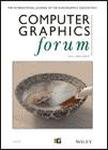版权所有:内蒙古大学图书馆 技术提供:维普资讯• 智图
内蒙古自治区呼和浩特市赛罕区大学西街235号 邮编: 010021

作者机构:Tech Univ Dresden Chair Comp Graph & Visualizat Dresden Germany
出 版 物:《COMPUTER GRAPHICS FORUM》 (计算机图形学论坛)
年 卷 期:2015年第34卷第3期
页 面:151-160页
核心收录:
学科分类:08[工学] 0835[工学-软件工程] 0812[工学-计算机科学与技术(可授工学、理学学位)]
主 题:Categories and Subject Descriptors (according to ACM CCS) I.3.3 [Computer Graphics]: Picture/Image Generation&mdash Display Algorithms I.3.7 [Computer Graphics]: Three-Dimensional Graphics and Realism&mdash Color shading shadowing and texture I.3.7 [Computer Graphics]: Three-Dimensional Graphics and Realism&mdash Raytracing
摘 要:Particle-based simulation techniques, like the discrete element method or molecular dynamics, are widely used in many research fields. In real-time explorative visualization it is common to render the resulting data using opaque spherical glyphs with local lighting only. Due to massive overlaps, however, inner structures of the data are often occluded rendering visual analysis impossible. Furthermore, local lighting is not sufficient as several important features like complex shapes, holes, rifts or filaments cannot be perceived well. To address both problems we present a new technique that jointly supports transparency and ambient occlusion in a consistent illumination model. Our approach is based on the emission-absorption model of volume rendering. We provide analytic solutions to the volume rendering integral for several density distributions within a spherical glyph. Compared to constant transparency our approach preserves the three-dimensional impression of the glyphs much better. We approximate ambient illumination with a fast hierarchical voxel cone-tracing approach, which builds on a new real-time voxelization of the particle data. Our implementation achieves interactive frame rates for millions of static or dynamic particles without any preprocessing. We illustrate the merits of our method on real-world data sets gaining several new insights.